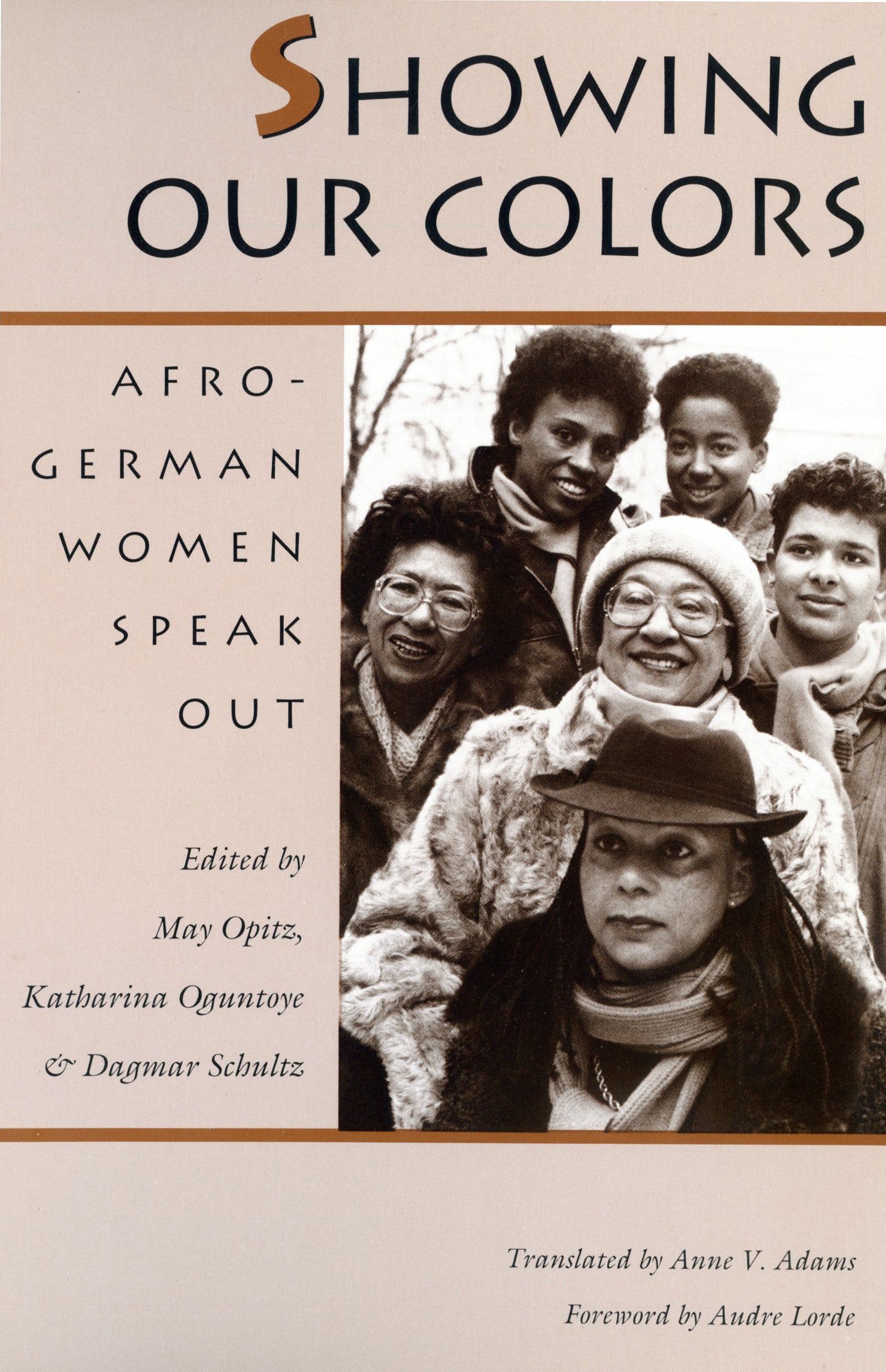May Opitz, Katharina Oguntoye, Dagmar Schultz (eds.): Showing Our Colors: Afro-German Women Speak Out (1991)
Filed under book | Tags: · black people, colonialism, feminism, germany, history, race, racism, sexism, women

“ISD (Initiative Schwarze Menschen in Deutschland), ADEFRA (Schwarze Frauen in Deutschland), Neuen Schwarzen Bewegung, all began in the 1980s in Berlin, centred around Freie Universität where Dagmar Schultz was professor. She invited Audre Lorde as a visiting professor from 1984, where May Opitz (from 1992 May Ayim) and Katharina Oguntoye attended her seminars. Out of this came Black History Month in Germany in 1991, and Farbe bekennen: Afro-deutsche Frauen auf den Spuren ihrer Geschichte, published in 1986.” (Source)
First published in German as Farbe bekennen: afro-deutsche Frauen auf den Spuren ihrer Geschichte, Orlanda Frauenverlag, Berlin, 1986.
English edition
Foreword by Audre Lorde
Translated by Anne V. Adams
Publisher University of Massachusetts Press, Amherst, MA, 1991
ISBN 0870237594, 9780870237591
xxv+239 pages
Reviews: Amina Mama (Feminist Review, 1993), Leslie Morris (German Quarterly, 1994), George Junne (Explorations in Sights and Sounds, 1993), Laura Freisberg (BR, 2020, DE).
Publisher (new ed., 2020, DE)
Publisher (EN)
Wikipedia
WorldCat
Degenerate Art: The Fate of the Avant-Garde in Nazi Germany (1991)
Filed under catalogue | Tags: · art, art history, avant-garde, cubism, dada, expressionism, fauvism, germany, impressionism, nazism, neue sachlichkeit, surrealism
“On July 19, 1937, the Entartete Kunst [Degenerate Art] exhibition opened in the Hofgarten arcades of Munich’s Residenz. It included 650 works of art confiscated from 32 German museums. For the National Socialists, the term “degenerate” applied to any type of art that was incompatible with their ideology or propaganda. Whole movements were labeled as such, including Expressionism, Impressionism, Dada, New Objectivity, Surrealism, Cubism, and Fauvism, among others. Many of Germany’s most talented and innovative artists suffered official defamation: for example, George Grosz, Ernst Ludwig Kirchner, Max Ernst, Karl Schmidt-Rottluff, Max Pechstein, Paul Klee, and Ernst Barlach. Avant-garde artists and museum directors who purchased or exhibited modern art had already been barred from professional activity as early as 1933. With this exhibition, the visual arts were forced into complete submission to censorship and National Socialist “coordination” [Gleichschaltung]. Initiated by Minster of Propaganda Joseph Goebbels and President of the Reich Chamber of the Visual Arts Adolf Ziegler (1892-1959), the exhibition travelled to twelve other cities from 1937 to 1941. In all, the show drew more than 3 million visitors. The exhibition sought to demonstrate the “degeneration” of artworks by placing them alongside drawings done by the mentally retarded and photographs of the physically handicapped. These comparisons aimed to highlight the “diseased,” “Jewish-Bolshevist,” and inferior character of these artworks and to warn of an impending “cultural decline.” As an exercise in contrast, the opposite – good, “healthy,” “German” art – could be seen in the “Great German Art Exhibition,” on view only a few meters away.” (Source)
This catalogue examines and documents the 1937 exhibition Entartete Kunst. Includes essays, a diagrammed catalogue of the exhibition, artist biographies, a translated facsimile of the exhibition guide, and other reference resources, accompanied by reprints of the artworks and photos of the exhibition itself.
Published in conjunction with the exhibition held at the Los Angeles County Museum of Art, Feb. 17-May 12, 1991, and at the Art Institute of Chicago, June 22-Sept. 8, 1991.
Edited by Stephanie Barron
Publisher Los Angeles County Museum of Art, and H.N. Abrams, New York, 1991
ISBN 0810936534, 9780810936539
424 pages
Film footage from the Munich exhibition (4 min).
Exh. reviews: William Wilson (LA Times 1991), Michael Kimmelman (NYT 1991), Fred Camper (Chicago Reader 1991),
Cat. reviews: Willibald Sauerländer (NY Review of Books 1994), Werckmeister (Art Bulletin 1997), .
Internet Archive (PDF, JPGs, multiple formats)
1937 exhibition brochure with English translation (at Internet Archive), Spanish translation (1980, added on 2016-12-10)
The German Experimental Film of the 1990s (1996) [German/English]
Filed under brochure | Tags: · 1990s, cinema, experimental film, film, film criticism, germany

A survey of short experimental films made in Germany between 1990-95.
Der Deutsche experimentalfilm der 90er Jahre
Edited by Bruno Fischli and Carola Ferber
Written by Jochen Coldewey
Translation Martin Robinshaw
Publisher Goethe Institut, Munich, 1996
101 pages
PDF (68 MB)
Comment (0)
